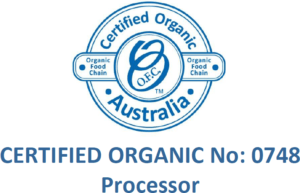A species of goosefoot (Chenopodium). It is a pseudocereal, as it is not a member of the grass family. As a chenopod, quinoa is closely related to species such as beets, spinach, and tumbleweeds.
Depending on the variety, quinoa’s optimal growing conditions are in cool climates and altitude-hardy, so it can be easily cultivated over 13,120 ft. It originated in the Andean region of South America, where it was successfully domesticated 3000 to 4000 years ago for human consumption.
The Incas, who held the crop to be sacred, [1] referred to quinoa as chisaya mama or ‘mother of all grains’ and it was the Inca emperor who would traditionally sow the first seeds of the season using ‘golden implements’. [1] During the European conquest of South America, the Spanish colonists scorned quinoa as ‘food for Indians’ [2] and even actively suppressed its cultivation, due to its status within indigenous non-Christian ceremonies. [3] In fact, the conquistadors forbade quinoa cultivation for a time [4] and the Incas were forced to grow wheat instead [5].
Quinoa was of great nutritional importance in pre-Columbian Andean civilizations, secondary only to the potato, and was followed in importance by maize. In contemporary times, this crop has become highly appreciated for its nutritional value, as its protein content is very high (12%–18%). Unlike wheat or rice (which are low in lysine) and like oats, quinoa contains a balanced set of essential amino acids for humans, making it an unusually complete protein source among plant foods. [6] It is a good source of dietary fibre and phosphorus and is high in magnesium and iron. Quinoa is gluten-free and considered easy to digest. Because of all these characteristics, quinoa is being considered a possible crop in NASA’s Controlled Ecological Life Support System for long-duration manned spaceflights. [6]
Nutritional value per 100 g (3.5 oz) Uncooked
(Source US Dept Agriculture Nutrition Database)
Energy 1,539 kJ (368 kcal)
Carbohydrates 64 g
Starch 52 g
Dietary fibre 7 g
Fat 6 g – polyunsaturated 3.3 g
Protein 14 g Water 13 g
Thiamine (Vit. B1) 0.36 mg
Riboflavin (Vit. B2) 0.32 mg
Vitamin B6 0.5 mg
Folate (Vit. B9) 184 μg
Vitamin E 2.4 mg
Iron 4.6 mg
Magnesium 197 mg
Phosphorus 457 mg
Zinc 3.1 mg
In its natural state quinoa, has a coating of bitter-tasting saponins, making it unpalatable. Most quinoa sold commercially in North America has been processed to remove this coating. This bitterness has beneficial effects during cultivation, as the plant is unpopular with birds and thus requires minimal protection.[7] There have been attempts to lower the saponin content of Quinoa through selective breeding to produce sweeter, more palatable varieties which have proven difficult due to cross pollination contamination.[8]
Quinoa has a light fluffy texture when cooked with a mild, slightly nutty flavor makes it a good alternative to rice, pasta or potatoes. The first step in preparing quinoa is to remove the saponins by presoaking the grain in water for 15-30min, then rinsing it in running water either in a fine strainer or in cheesecloth.
Most pre-packaged quinoa has been pre-rinsed for convenience and cooking instructions suggest only a brief rinse before cooking.
A common cooking method is to bring two cups of water to a boil with one cup of grain, covering at a low simmer and cooking for 14–18 minutes or until the germ separates from the seed. The cooked germ looks like a tiny curl and should have a slight bite to it. Strained rinsed under cool running water for salads or eaten while hot with stews curries and soups. Quinoa can serve as a high-protein breakfast with honey, almonds, or berries.
Prepared by John Meyer
References
1) Popenoe, Hugh (1989). Lost crops of the Incas: little-known plants of the Andes with promise for worldwide cultivation. Washington, D.C.: National Academy Press. p. 149. ISBN 0-309-04264-X
2) Gade, Daniel W. (1999). Nature and culture in the Andes. Madison: University of Wisconsin Press. p. 206. ISBN 0-299-16124-2.
3) Bailey, Garrick Alan; Peoples, James (2009). Humanity: an introduction to cultural anthropology. Belmont, CA: Wadsworth Cengage Learning. p. 120. ISBN 0-495-50874-8.
4) Bernice Kagan; Meredith McCarty (1995). Fresh from a vegetarian kitchen. New York: St. Martin’s Press. p. 56. ISBN 0-312-11795-7.
5) Andy Turnbull (2005). We need to talk: about the future of Canada. Toronto: Red Ear Pub. p. 23. ISBN 0-9681258-5-9.
6) Greg Schlick and David L. Bubenheim (November 1993). “Quinoa: An Emerging “New” Crop with Potential for CELSS” (PDF). NASA Technical Paper 3422. NASA.
7) Quinoa”. Alternative Field Crops Manual. University of Wisconsin Extension and University of Minnesota. January 20, 2000.
8) Masterbroek, H.D.; Limburg, H., Gilles, T. and Marvin, H. J. (2000). Occurrence of sapogenins in leaves and seeds of Quinoa (Chenopodium quinoa Willd).. New York, NY.: Journal of the Science of Food and Agriculture. pp. 152–156.


